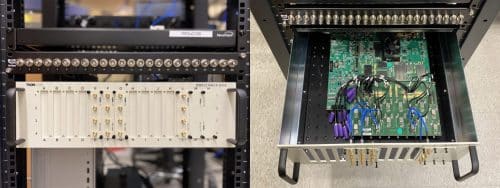Bridging the communication gap between the classical and quantum worlds is a rather substantial difficulty – such computers require specialised control and readout circuits, but present methods are laborious and expensive.
Quantum Instrumentation Control Kit, or QICK, a revolutionary control and readout electronics system developed by experts at the US Department of Energy’s Fermi National Accelerator Laboratory, has proven to dramatically improve quantum computer performance while lowering control equipment costs. Their goal was to develop and test a quantum computer controller based on a field-programmable gate array (FPGA).

Readout electronics measure the states of the qubits and send that information back to the classical world, while control electronics employ signals from the classical world as instructions for the computer’s quantum bits, or qubits.
Superconducting circuits are used as qubits in one prospective quantum computing method. Most superconducting quantum computer control and readout systems now use off-the-shelf commercial equipment that isn’t tailored for the job. As a result, researchers are frequently required to connect a dozen or more costly components. The cost per qubit can soon reach tens of thousands of dollars, and the vast size of these systems adds to the complexity.
Senior principal engineer Gustavo Cancelo and his Fermilab team in collaboration with the University of Chicago, devised a compact control and readout system to overcome this problem. A single electronics board, slightly larger than a laptop, houses the capability of a complete rack of equipment. The new technology is specialised, yet it is adaptable enough to work with a variety of superconducting qubit designs.
“We are designing a general instrument for a large variety of qubits, hoping to cover those that will be designed six months or a year from now,” Cancelo said. “With our control and readout electronics, you can achieve functionality and performance that is hard or impossible to do with commercial equipment.”
Microwave pulses are used to control and read qubits. The Fermilab team’s radio frequency (RF) board has over 200 components, including mixers for tweaking frequencies, filters for removing unwanted frequencies, amplifiers and attenuators for adjusting signal volume, and switches for turning signals on and off. A low-frequency control is also included on the board for fine-tuning particular qubit settings. The RF board, when combined with a commercial FPGA board (which serves as the computer’s brain) gives scientists everything they need to connect successfully with the quantum realm.
The RF board and layout took around six months to design and offered numerous obstacles. Furthermore, the engineers had to avoid configurations that picked up stray radio waves from sources like as cell phones and WiFi. They did simulations along the way to make sure they were on the right track. The design is now ready for fabrication and assembly.







which FPGA was used?
Hello,
Fermilab has not announced which FPGA they had used. However, it was a commercial FPGA chip.